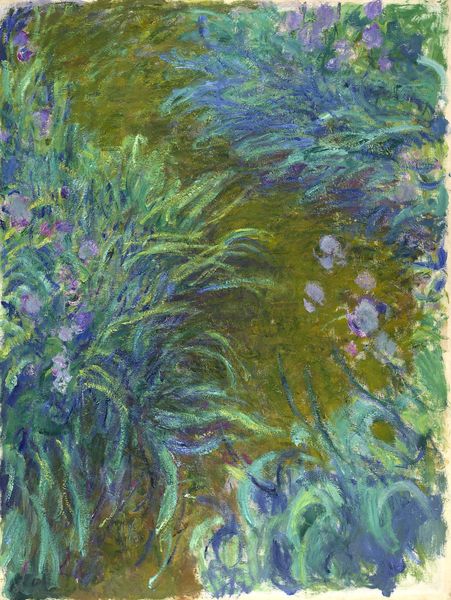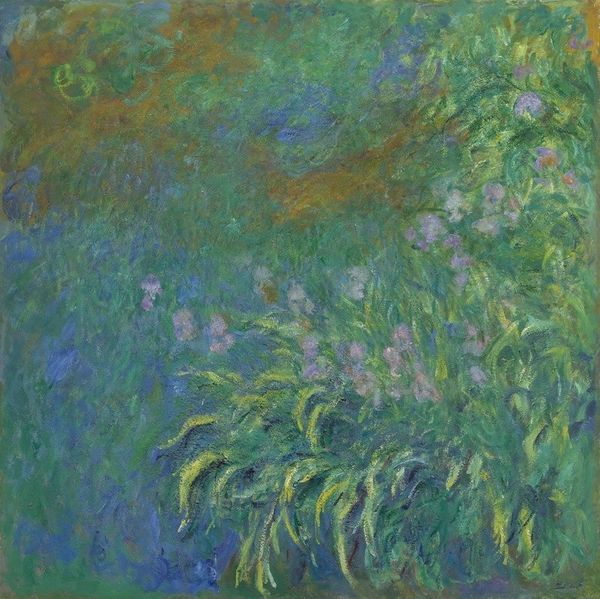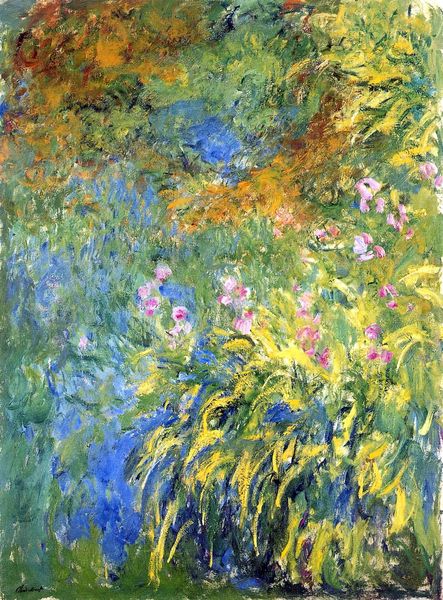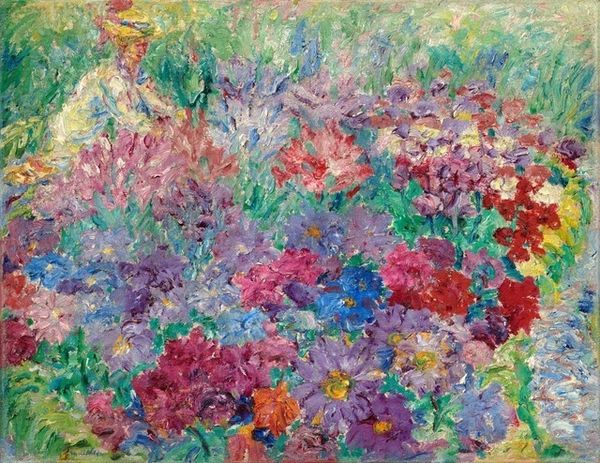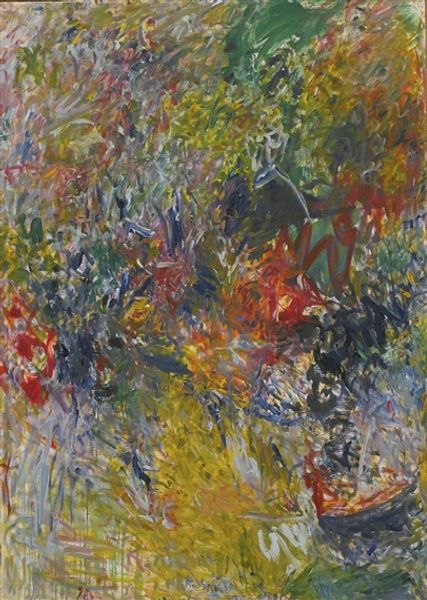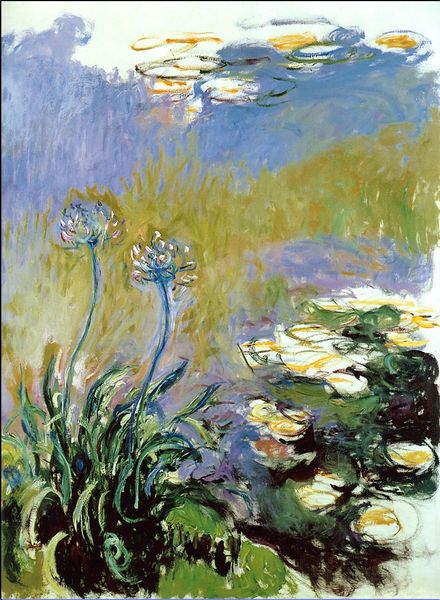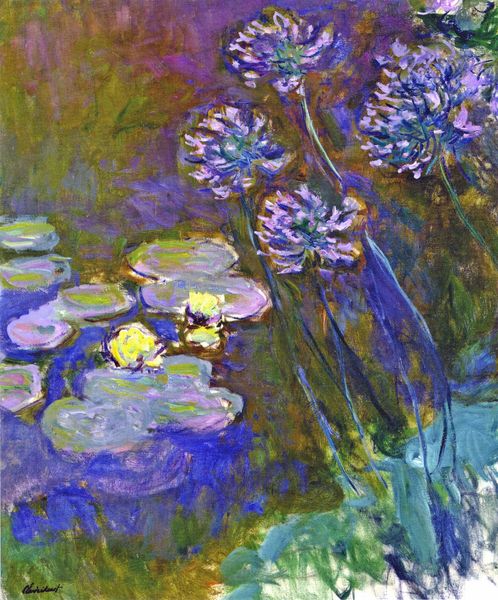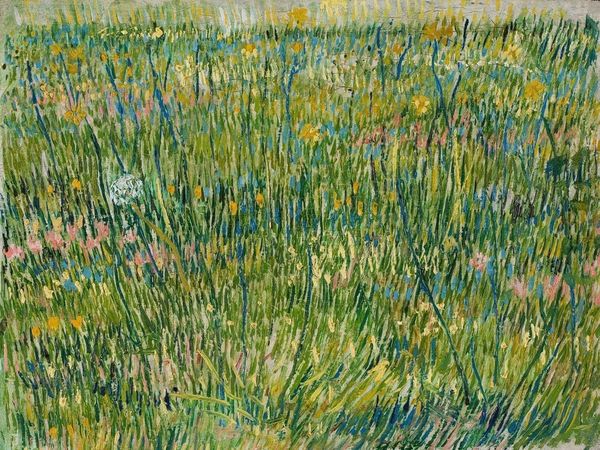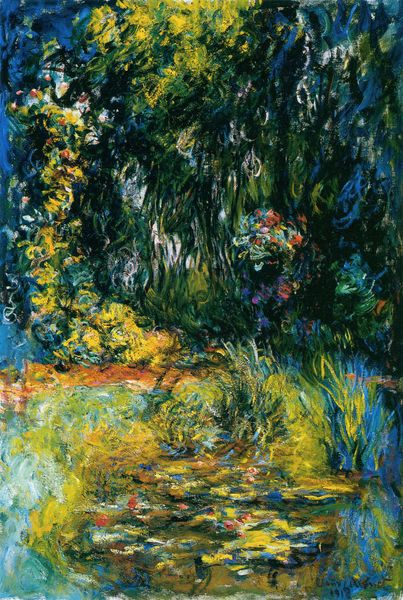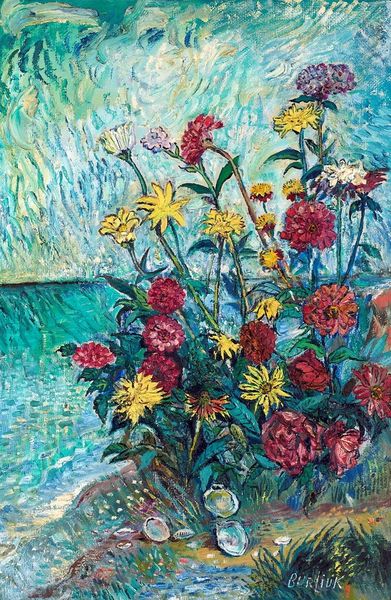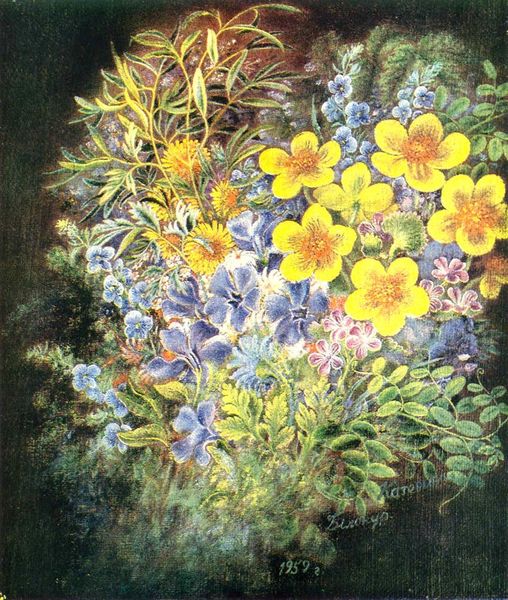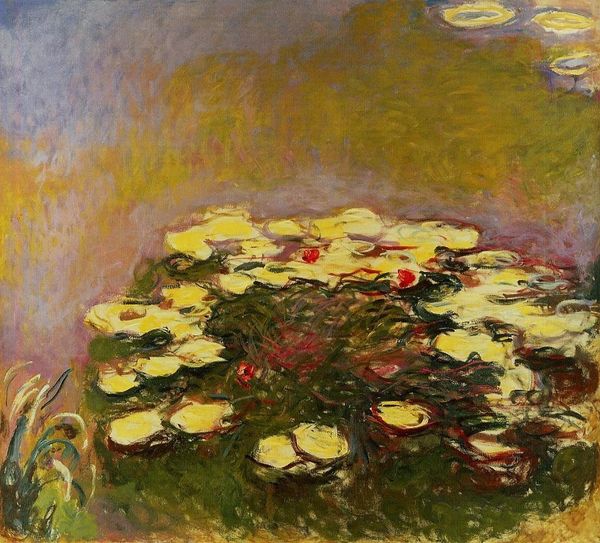
Copyright: Public domain
Claude Monet created this painting of Agapanthus Flowers using oil paint on canvas. Immediately, you’re struck by the texture, a tapestry of short, energetic strokes of green and blue, punctuated by the spherical blooms of pink and purple. Monet’s application of paint goes beyond mere representation; it's an exploration of form. The vibrant colors are not just descriptive but also constructive, shaping the image and dictating the viewer’s experience. Note how the brushstrokes, while appearing random, are carefully placed to build depth and movement. Monet challenges traditional notions of perspective and composition. The painting destabilizes the established values of academic art, prioritizing the sensory experience over realistic depiction. The lack of clear lines and defined shapes invites a new way of seeing, where perception becomes an active process of interpretation. Ultimately, it's through the artwork's materiality and composition that Monet communicates not just the image of a garden, but a profound engagement with the nature of perception itself. This painting remains a vital point of dialogue on the relationship between art, reality, and the evolving nature of seeing.
Comments
No comments
Be the first to comment and join the conversation on the ultimate creative platform.
